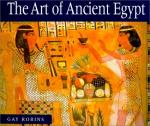|
This section contains 644 words (approx. 3 pages at 300 words per page) |

|
Natural Divisions. Egypt comprises two inhabitable zones—the valley and the delta of the Nile River. The valley divides into the east and west banks of the river, each with a desert beyond the area of cultivation. The delta also divides into two zones, east and west. Some scholars have argued that these divisions suggested to the Egyptians that the world could be conceived as a series of dualities. Certainly the Egyptians described their country in complementary pairs. The Egyptians commonly called their country "The Two Lands" (tawy), referring to Narmer's unification of Upper and Lower Egypt around 3000 B.C.E. The desert, called the Red Land (desheret), and the inhabitable zone, called the Black Land (kemet), were another duality in Egyptian thought. The Egyptians also contrasted the inhospitable mountains in view of the valley as the Haset, while the fertile valley was called the Ta.
The...
|
This section contains 644 words (approx. 3 pages at 300 words per page) |

|



